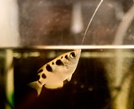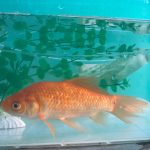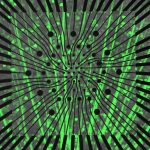Understanding the neural basis of behavior
We are interested in understanding the connection between the function of neural networks and behavior in fish. That is, we ask how neural networks represent and process sensory information in order to enable teleost fish to behave in the world. The lab primarily studies visual processing and spatial cognition combining experiments, computational modelling and quantitative analysis techniques. The lab is focused along two major projects: visual behaviour in the archerfish and spatial cognition in goldfish.
Visual behavior in the archerfish

In our lab we use the archerfish (Toxotes jaculatrix) as our main model animal for visual processing. The utility of the archerfish as model animal stems from its remarkable ability to shoot down insects settling on the foliage above the water level, and its ability to learn to distinguish between artificial targets. Thus, the archer fish can be trained provides the fish equivalent of a monkey or a human that can report psychophysical decisions. Later on we can use electrophysiology to study the connection between the decision making by the fish and the functional properties of the fish visual system and other parts of the brain.
The neural basis of navigation in goldfish

The ability to navigate in the world is extremely important to many animals. A fundamental issue in understanding navigation is how the brain represents information about space. Although navigation has been studied extensively in many taxa, the key efforts to understand the neural basis of navigation have been focused on mammals in small scale lab experiments. Nevertheless, to date, there is no theory that fully explains the ways in which the components of the brain’s spatial representation are integrated into its navigation system, since experimental findings do not provide a clear answer as to how this integration takes place. To address this issue, we take a comparative approach to vertebrate navigation by providing an evolutionary perspective to determine the first principles driving the navigation mechanism. Specifically, charting space representation in the goldfish brain can show how the elementary building blocks are integrated to enable navigation.
Retinal encoding and information processing
 We use the tiger alamander and archer fish retinas to study basic questions in retinal encoding and information processing. This is done using multi electrode array technology, where many ganglion cells from an isolated retina are simultaneously recoded by an array of extracellular microelectrodes, while visual stimuli are projected from a computer screen onto the layer of photoreceptors. Because of the modular organization of the retina, one only needs to record from ganglion cells in a small patch of the retina to see the full variety of retinal coding schemes.
We use the tiger alamander and archer fish retinas to study basic questions in retinal encoding and information processing. This is done using multi electrode array technology, where many ganglion cells from an isolated retina are simultaneously recoded by an array of extracellular microelectrodes, while visual stimuli are projected from a computer screen onto the layer of photoreceptors. Because of the modular organization of the retina, one only needs to record from ganglion cells in a small patch of the retina to see the full variety of retinal coding schemes.
Experimental Approaches
The lab expertise is focused on electrophysiology using single electrode, tetrodes and multi-electrode arrays recording. We also combine electrophysiology in vivo of behaving fish together with advanced imaging techniques to measure neuronal activity. In addition, we use theoretical tools together with modeling in order to provide better understanding of our experimental observations and analysis of experimental data.

